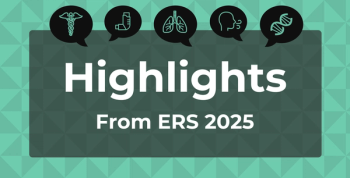
Dr Jay Lee: NSCLC Recurrence More Costly Than Patients Who Don’t Experience Recurrence
Jay Lee, MD, talks about financial toxicity in terms of the individual patient and in terms of the health system itself, especially in terms of non-small cell lung cancer (NSCLC) recurrence.
Jay Lee, MD, thoracic surgeon, surgical director, thoracic oncology program, University of California Los Angeles Health, division of thoracic surgery, and presenter at the
Transcript
What role does financial toxicity play in in the treatment of NSCLC?
Financial toxicity can be looked at in 2 ways. One is at the personal patient level and what kind of financial responsibilities are they faced with? And then also, financial toxicity in the reimbursement at the insurance claims level where health care resource utilization can be seen system wide. It's hard to collect data on the patient portion and what their financial responsibilities are.
However, we did look at the Sears Medicare database and looked at claims and associated costs of patients in the early stage [NSCLC] setting that have surgery. When patients develop recurrences versus no recurrences, inherently, we expect that cost will be higher when a patient develops a recurrence, but there hasn't been a whole lot of data about what those numbers actually are.
We reported on real world data analysis from the Medicare Sears database, and what we found was that when you look at health care resources, including inpatient visits, outpatient visits, physician services and emergency department visits, all of those resources were higher in patients that had recurrences. When we define a health care unit as per patient per month health care resource utilization—we defined this as PPPM in our in our reports that we have published on—what we find is that the average per patient per month cost when a patient develops a recurrence is roughly about $7,400. Compared to a patient that doesn't develop recurrence, it's about $1,100 per patient per month.
So, there's a significant difference in in the financial toxicity to the health system overall, in patients that develop a recurrence. This really points to the importance of preventing recurrences, not only because it's important as a surrogate for overall survival, but it's also beneficial from a financial perspective to reduce recurrences to the health care system.
Newsletter
Stay ahead of policy, cost, and value—subscribe to AJMC for expert insights at the intersection of clinical care and health economics.













































